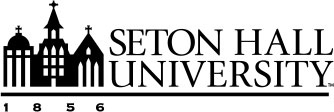
Unleashing Transformation in the Digital Era
Friday, October 27, 2023
We are at a transformative moment in history with generative AI. We have seen a transformation like this before, with the internet, the cloud, the smartphone and social media.
What is different now is the speed. When we went through the cloud revolution, companies took almost 20 years to fully embrace it. For the first 10 years, people questioned whether they should use the cloud. And then they decided to do it.
In the case of generative AI, it is not going to be years, it’s going to be months. People will need to move very quickly.
Generative AI is going to revolutionize how work gets done. The change will affect knowledge workers and eliminate a lot of the mundane work they do. It will not affect the nonrepetitive knowledge work, the kind, for example, that CEOs or other leaders do. But it will affect the repetitive knowledge work that a paralegal, junior banker or an actuarial analyst might do.
The interesting question is whether this means we don’t need junior bankers and paralegals anymore. Or if this is when the junior bankers and the paralegals learn how to use this tool (because they are so much more adept than the more senior people when it comes to technology) that we don’t need the senior people anymore.
Also, if you are No. 2 or No. 3 in your industry, does adopting generative AI allow you to become No. 1? And if you are No. 1, this is the time when you should be afraid and careful that your position is not affected. Companies are adopting generative AI in service operations (everything from the service desk to the contact center), and to improve their core product (for example, anti-money laundering, doctor-patient communication, complaints resolution and claims processing). It’s an opportunity for the core business to embrace AI, become more efficient and gain a competitive advantage.
Establishing Guardrails
Security is going to be very challenging. The technology now allows someone to impersonate
your voice, call your kid, and say, this is your dad or mom and give me your Social
Security number, or whatever. You can make deepfakes and videos, malware and even
bombs. Therefore, you must establish the proper guardrails quickly. You cannot afford
to have your data showing up all over the place. Many companies are reacting by banning
things like ChatGPT simply because they’re afraid that personal data and IP will get
compromised. As they say, the most secure email system is a nonexistent email system.
The key is to establish some guardrails, but you must let people play — allow people
to experiment.
Embrace Innovation
The most successful companies are not only allowing employees to innovate, but they
are also crowdsourcing the innovation. They are encouraging employees to come back
with their ideas on what should be done differently. They are asking them to challenge
the status quo. They’re setting up internal competitions and finding what’s different
because the best ideas will come from all over the organization, not necessarily just
from the top. Often, in fact, those at the top don’t know how to leverage this new
technology because they simply don’t have the time to use it.
Flatten the Organization
The top-down hierarchical organizational model can often run counter to innovation.
The critical thing to realize is that innovation will come from different places in
an organization and from outside the boardroom. If you take ideas through a hierarchical
organization’s approval layers, they will never surface. So, you have to find ways
to flatten the organization. A new group of people is likely to rise to the top, but
it is hard to predict who that will be at the outset. You have to find ways to flatten
the organization and allow everyone to participate
The Rise of the Generalist – Connecting the Dots
The specialist game is slightly more challenging now because the AI is your specialist.
I see a need for talent and leaders who are as versatile as a Swiss Army knife. Moving
forward, leaders will have to become good at connecting the dots. Traditionally, senior
leaders have not had the time or the skills to get into the details. Unfortunately,
this may be a case where they must get into the details and connect the dots across
everything that gets done in their organizations. The product team will have great
ideas for improving the product with generative AI. But are those the most relevant
ideas that will help you against the competition or generate value for your company?
Leadership must find a way to connect and bridge those dots.
Establishing Peer Groups
This is the time to talk to some peer groups and determine what else is happening
because good ideas will come from more than just your organization. This is one of
those times when you must see what others are doing, not just within your industry
but across industries. That will give you a lot of ideas and a lot of information
on what to look for. I tell people in my company that they should have at least three
or four conversations about generative AI every week to hear what others are doing
and share their thinking. When they do, they will find out whether others agree. This
is all good as it will give them different ways to approach and think about it, and
that’s important.
Rethink Your Portfolio
It’s time to rethink your portfolio. Like offshoring, for example. Every time you
move the needle on automation, you change the game on what can be reshored and offshored.
It is also one of those moments that can change the products you bring to market.
It’s not just a question of efficiency and things of that nature but the nature of
the product itself. Can you embed generative AI in your product? First electronics
and then software ate the world, and now AI will be next. You may not know what it
means yet, but your product will have AI in it, whether it’s your car, book or whatever
it is. If you don’t move fast, the competition will move quickly in this space. Leaders
need to move quickly to establish guardrails, drive innovation, connect the dots and
rethink their portfolio while flattening their organization to get ready for this
new wave.
This article originally appeared in the Fall 2023 issue of In the Lead magazine, from Buccino Leadership Institute. The bi-annual magazine focuses on leadership perspectives from the field of health care, with content that is curated from leaders across the industry who share lessons learned from real-world experiences.
Categories: Science and Technology

